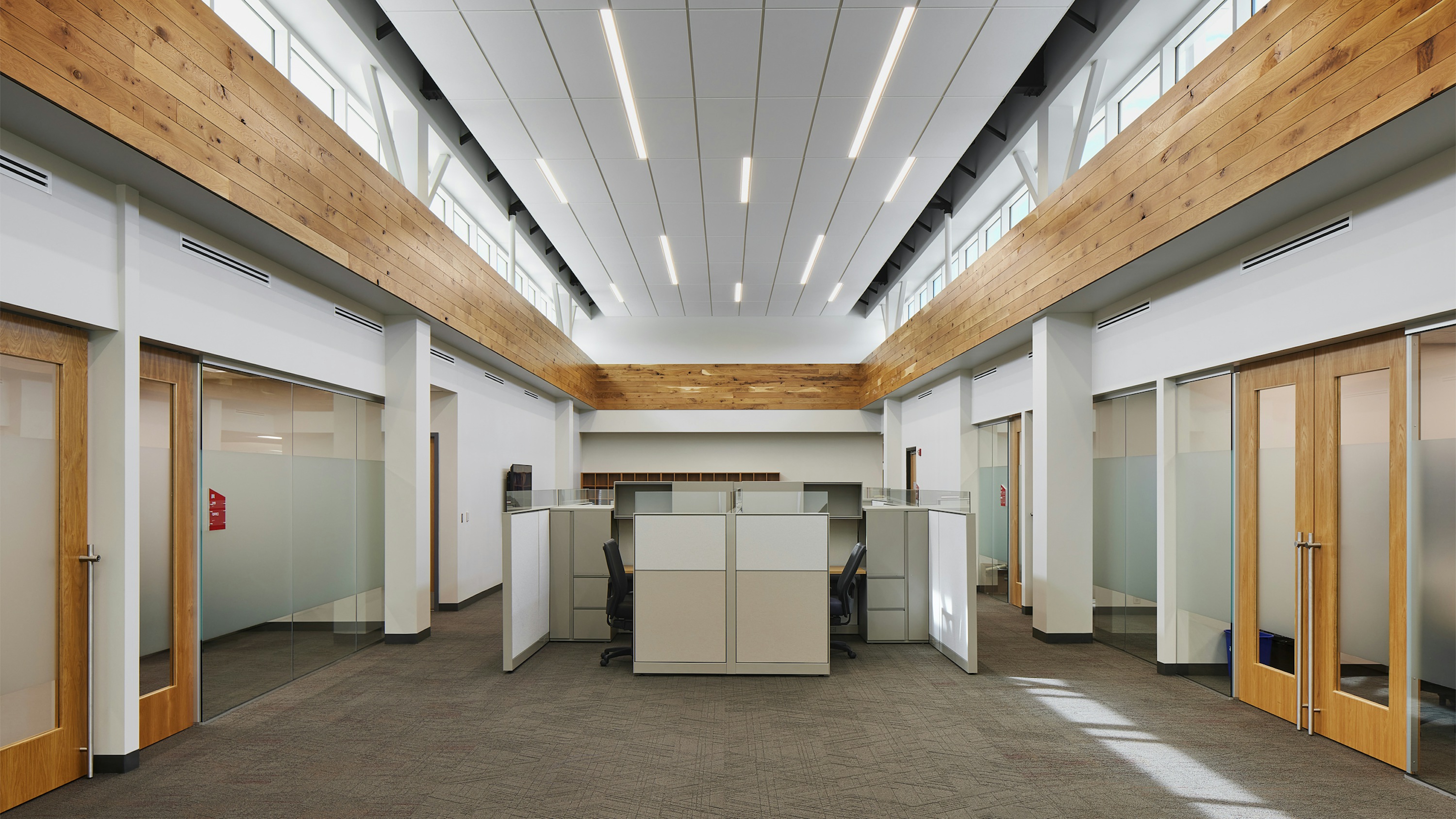


Fire stations of today must go beyond garages with bunks and instead create high-performance environments that support split-second decision-making and high-stress work, all while functioning as a second home. As the impact of mental health continues to be recognized and supported in the fire industry, station design is being called to do more: reduce stress, encourage decompression and promote overall wellness. In fact, according to Wold’s State of Community Facility Design survey, 86 percent of Americans believe mental health and wellness should be prioritized in the design of community buildings, including emergency response and fire stations.
As a national leader in public safety facility and fire station design, Wold has helped departments across the country rethink how their stations can support responder well-being, boost recruitment and retention and create environments where people feel valued and protected – both on and off the clock. From reducing stress to encouraging decompression, we believe every element of design should help firefighters do their jobs more safely and effectively.
One of the emerging voices leading this work is Paige Sullivan, AIA, a government-focused architect and fire station designer based in our Minnesota office. With a portfolio spanning many stations across Minnesota and Wisconsin alone, Paige brings a rare level of specialization and insight into the day-to-day needs of fire personnel. She works hand in hand with fire chiefs, department leaders and municipal teams to design wellness-centered spaces that function just as effectively for emergency response as they do for daily life. For Paige, successful fire station design is about creating environments that feel like a second home and prioritize safety, support and the overall well-being of the people inside them.
A “well” fire station balances high performance and productivity with comfort and calm. Key design elements include access to natural light, which supports circadian rhythms disrupted by shift work, as well as calming colors and residential-inspired finishes to help firefighters decompress after high-stress calls. Clear organization of spaces allows for rest without compromising response time, and separating clean and contaminated areas helps reduce long-term exposure to carcinogens. Together, these features create a space that truly supports firefighter wellness, both on and off duty.
One of the most effective ways to support mental health in fire stations is to create a clear and intentional separation between “work” zones and “rest” zones. After a high-stress call, firefighters need space to reset, whether that’s preparing a meal, watching TV in the dayroom or stepping outside for fresh air. These activities seem simple, but they rely on the station’s architecture to support them. Designing distinct transitions between operational areas and residential-style spaces enables firefighters to physically and mentally step out of response mode and begin to decompress, which is crucial for long-term well-being.


Fitness spaces in modern fire stations need to go beyond rows of treadmills or static equipment. Intentional design should allow for dynamic movement, like circuit training, mobility work and small group workouts, that support both physical health and camaraderie among the crew. Where possible, connecting fitness areas to the outdoors can promote natural light, fresh air and a sense of openness, all of which contribute to mental well-being. In addition to supporting physical fitness, these spaces should help reduce stress, foster resilience and promote consistent, wellness-focused routines.
In smaller, rural stations where crews are leaner and space is limited, multifunctional design becomes essential. Every square foot needs to work harder, supporting multiple uses without sacrificing comfort or efficiency. In contrast, larger urban stations with more staff and higher call volumes benefit from dedicated spaces for specific activities, allowing operations to flow smoothly. In these facilities, it’s also important to carve out quiet areas beyond just sleeping quarters, giving individuals a chance to recharge without feeling isolated from the team.
Looking ahead, wellness-centered fire station design will continue to evolve toward spaces that engage all the senses to promote calm, focus and recovery. We’re beginning to see more use of design elements like ambient lighting, soundscapes and even scent to help trigger natural physiological responses that support mental well-being. These sensory cues can help firefighters transition more effectively between high-stress calls and moments of rest. As research deepens and departments continue to prioritize holistic wellness, we’ll likely see more intentional use of these strategies integrated into everyday station design.

